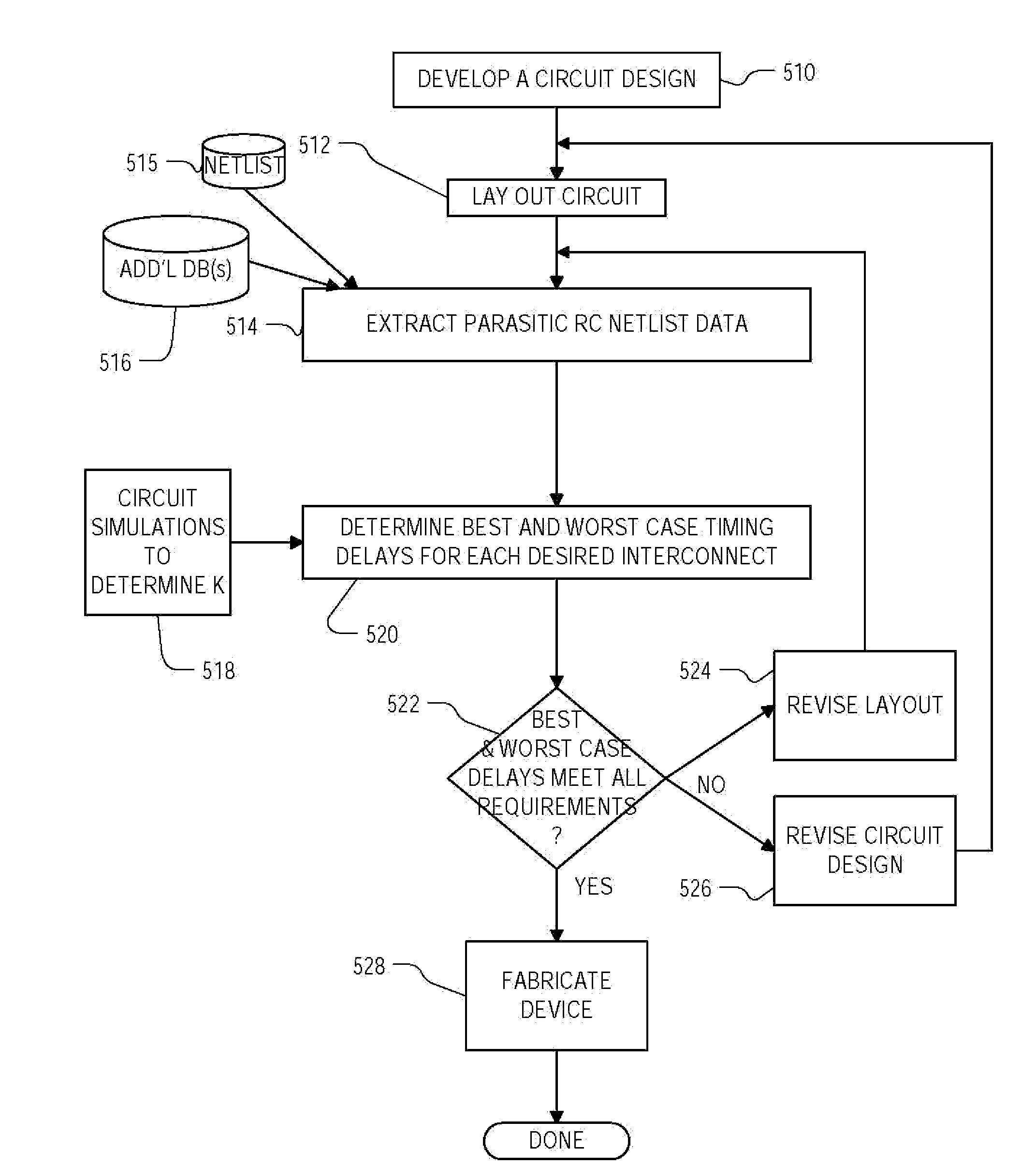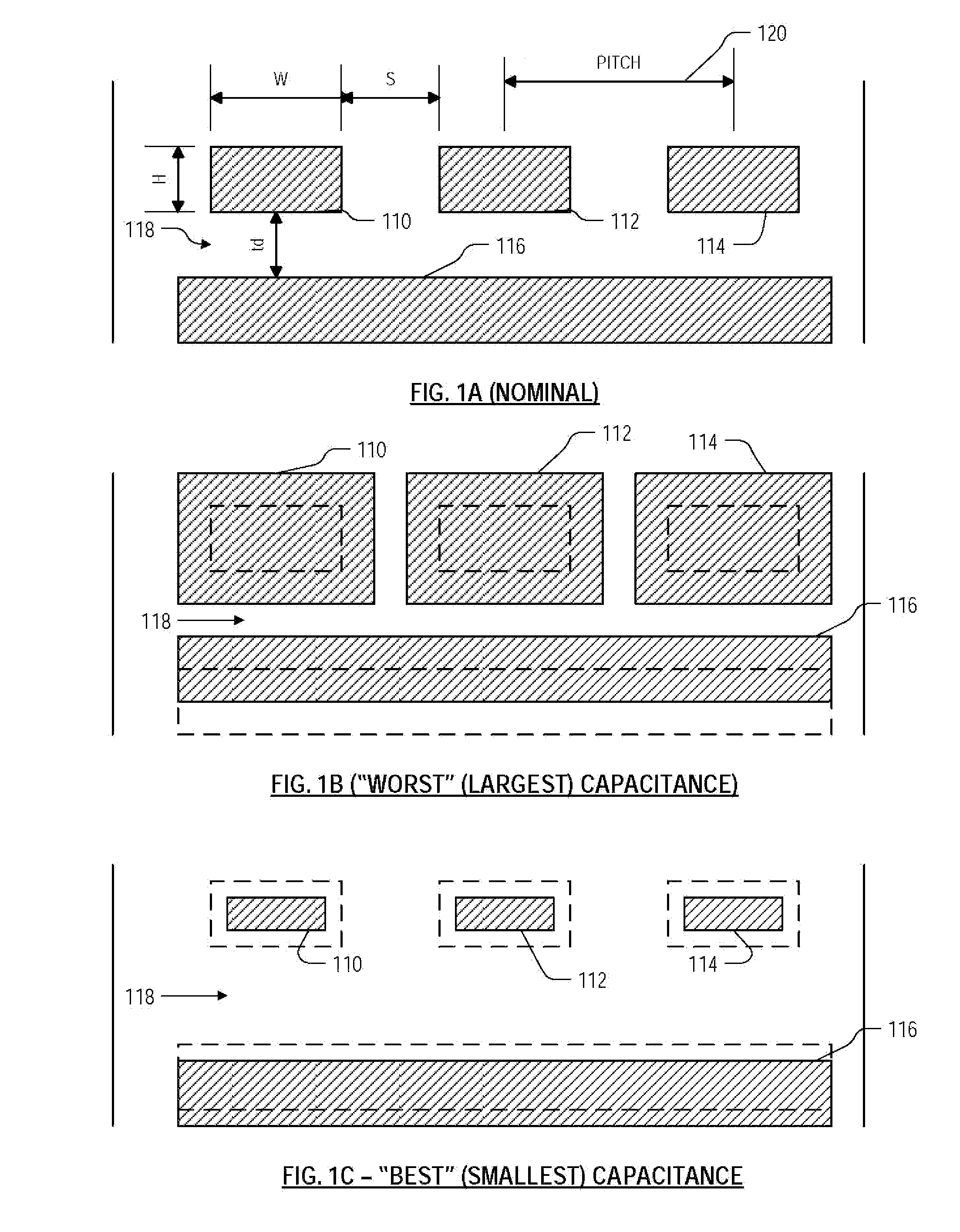Method for determining best and worst cases for interconnects in timing analysis
a timing analysis and interconnection technology, applied in the direction of individual semiconductor device testing, semiconductor/solid-state device testing/measurement, instruments, etc., can solve the problems of product yield at increasing risk, product may fail timing, and uncertainty in propagation tim
- Summary
- Abstract
- Description
- Claims
- Application Information
AI Technical Summary
Benefits of technology
Problems solved by technology
Method used
Image
Examples
Embodiment Construction
[0022]The following detailed description is made with reference to the figures. Preferred embodiments are described to illustrate the present invention, not to limit its scope, which is defined by the claims. Those of ordinary skill in the art will recognize a variety of equivalent variations on the description that follows.
[0023]FIG. 1A is a symbolic diagram of a portion of an integrated circuit device. Shown are three metal conductors 110, 112 and 114, extending into the plane of the page and viewed in cross-section, and a fourth conductor or ground plane 116 located in a layer below and separated by a dielectric layer 118. For this illustration, the conductors 110, 112 and 114 have a pitch 120. They all have a width W, a thickness H, and are spaced from each other by a distance S. The conductors 110, 112 and 114 are all separated from the underlying layer 116 by spacing td. FIG. 1A may illustrate the geometric characteristics of a device fabricated exactly as specified in the lay...
PUM
 Login to View More
Login to View More Abstract
Description
Claims
Application Information
 Login to View More
Login to View More - R&D
- Intellectual Property
- Life Sciences
- Materials
- Tech Scout
- Unparalleled Data Quality
- Higher Quality Content
- 60% Fewer Hallucinations
Browse by: Latest US Patents, China's latest patents, Technical Efficacy Thesaurus, Application Domain, Technology Topic, Popular Technical Reports.
© 2025 PatSnap. All rights reserved.Legal|Privacy policy|Modern Slavery Act Transparency Statement|Sitemap|About US| Contact US: help@patsnap.com



